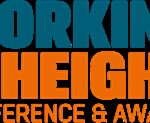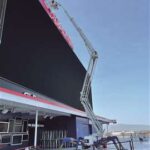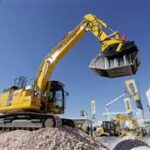When it comes to tackling your next project, one of the most important decisions you’ll need to make is choosing the right scissor lift. Electric or diesel? It’s a common dilemma, and while both have their perks, understanding their key differences can help you choose the best option for your needs. Let’s break it down!
Performance Comparison:
Electric Scissor Lifts:
- Power Source: These lifts are battery-powered, which means they’re ideal for indoor tasks where zero emissions and low noise levels are a must. They’re compact, so you can fit them into tighter spaces, and they’re perfect for environments like warehouses or retail stores.
- Benefits:
- Quiet Operation: Say goodbye to the noise that diesel lifts bring.
- Environmentally Friendly: With no fumes, these lifts are the go-to for eco-conscious projects.
- Low Maintenance: Fewer components and no need for fuel means they’re easier to service and less expensive to maintain.
- Challenges:
- Limited Reach & Capacity: While they’re fantastic for many tasks, electric scissor lifts can’t always reach as high or carry as much weight as their diesel cousins.
- Dependency on Charging: You’ll need access to charging stations to keep the lift running throughout the day, and it’s no fun being caught without a full charge.
Diesel Scissor Lifts:
- Power Source: Diesel engines power these lifts, making them perfect for outdoor tasks or any project requiring more lifting power. They’re great for rough terrain and can take on tougher environments.
- Benefits:
- More Power: Diesel lifts are stronger and able to handle more weight, making them perfect for heavy-duty work.
- Longer Operational Time: No need to worry about recharging them, so you can keep working as long as you’ve got fuel.
- Great for Rough Terrain: If you’re working in a construction zone with uneven surfaces, these lifts are the way to go.
- Challenges:
- Noise and Emissions: Diesel engines are louder, and the fumes can be a problem in indoor settings.
- Higher Maintenance Costs: Diesel models generally require more servicing, from engine maintenance to fuel and oil changes.
So, Which One Should You Choose?
It really depends on the job you’re working on. If you’re indoors, in a quiet space, and need something environmentally friendly, an electric scissor lift is probably your best bet. On the flip side, if you’re working outside in a rough area or need more lifting power, you’ll want a diesel scissor lift.
Here’s a simple way to think about it:
- Choose Electric: When you need to get the job done indoors, in confined spaces, or when reducing environmental impact is key.
- Go for Diesel: When you’re tackling tougher terrain, lifting heavy loads, or working for extended periods without the chance to recharge.




